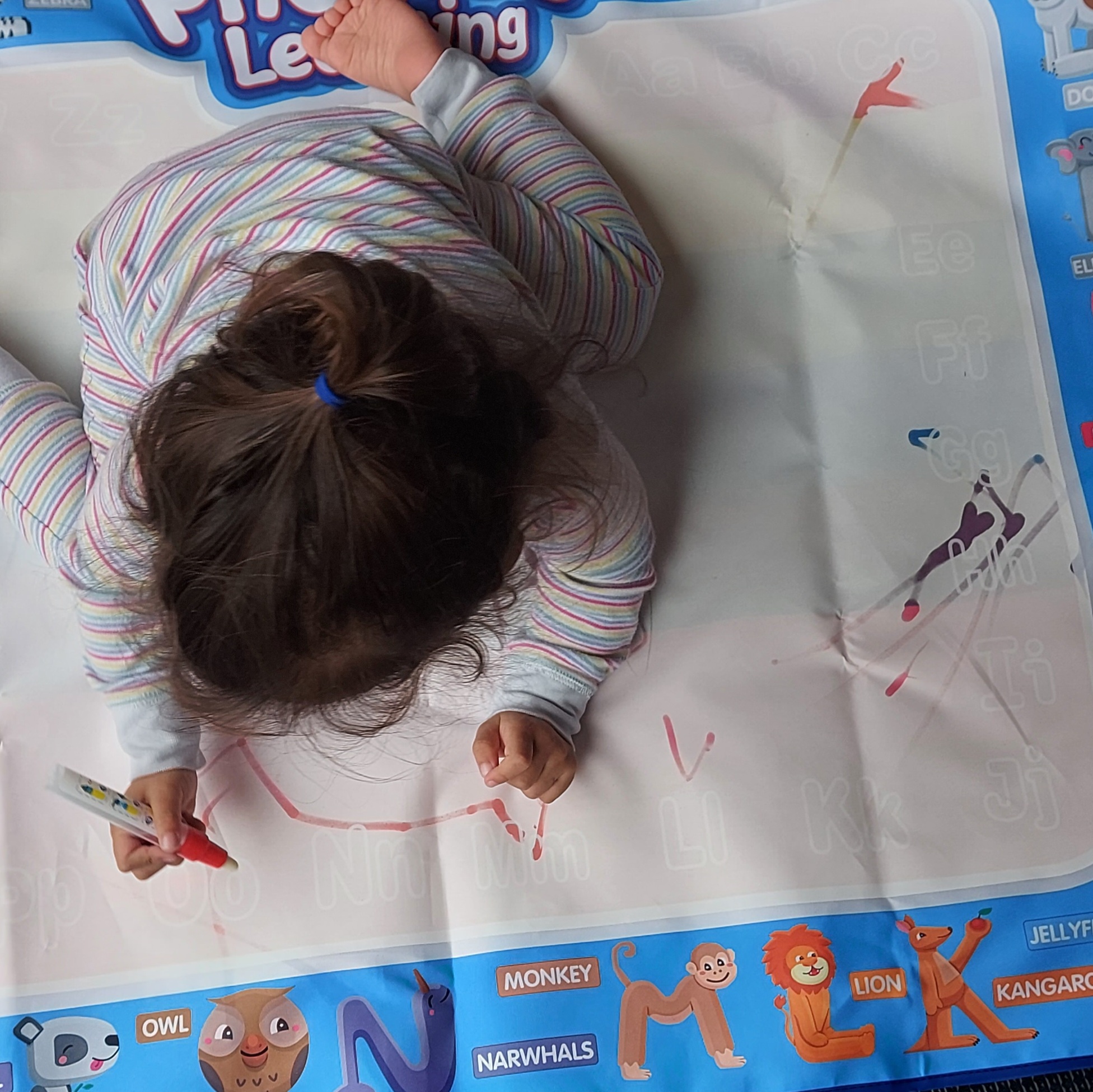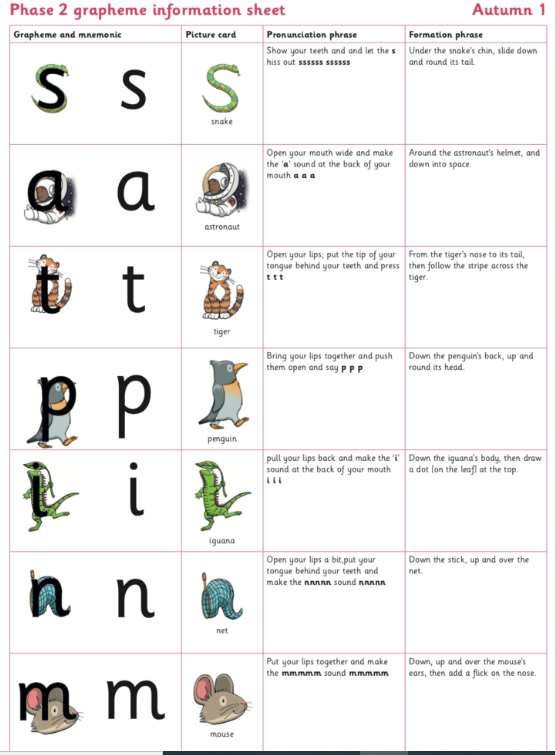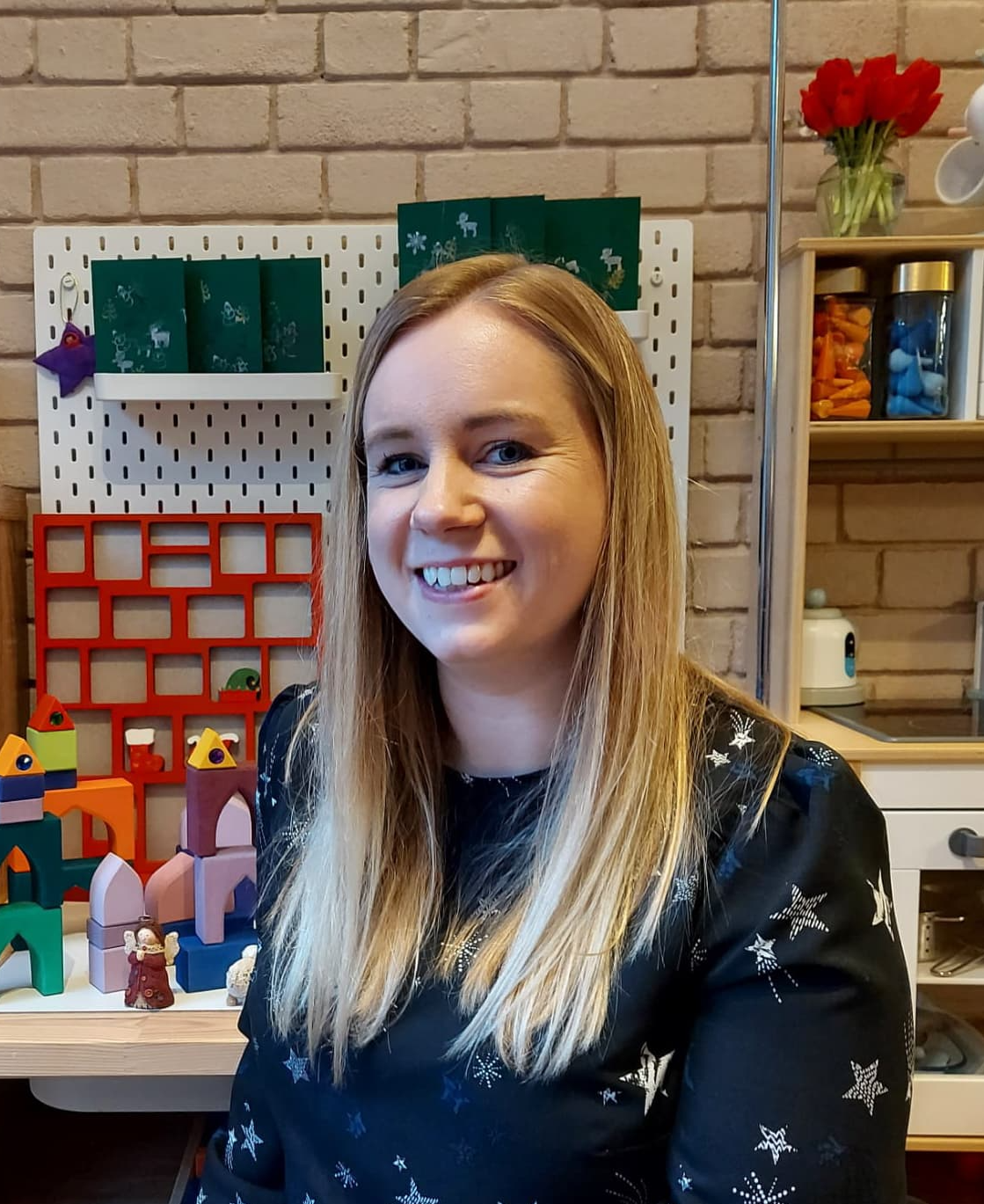How to use a Sound Chart to Support Your Child's Writing

Hey!
Are you a parent who has been handed a Sound Chart by your child's teacher but you have no idea what you are supposed to do with it?
Or are you are a parent who has never heard of a Sound Chart and are wondering what you have missed out on?
Don't worry, we have all the info you need here!
Vicki x
What is a Sound Chart?
When children start learning phonics, they are taught that sounds (known as phonemes) are represented by letters or groups of letters (known as graphemes).
A sound chart is piece of paper (usually laminated!) which shows on it the graphemes which the children are learning in their phonics sessions.
When children are first starting to learn their phonics their sound chart will usually be very simple with a grapheme and a picture to help them to recognise it.

As children continue to learn their phonics, and move into Year 1 and 2, they will usually start using a more complex sound chart which shows all the different graphemes used to represent a phoneme.

The sound chart which is used will vary from school to school, depending on the phonics scheme the school is using.
Why Do They Need Sound Charts?
Sound charts are a really useful piece of equipment to support children with their writing.
Typically, as children learn their phonics they are shown a picture and taught a mnemonic to help them to remember each phoneme.

When children first start to write they will be able to hear some of the phonemes within a word, for example they may be able to hear that the word 'cat' begins with the phoneme 'c', but they may not be able to remember how to write the grapheme 'c'.
Because the children have memorised a picture to go with each phoneme, they are able to use a sound chart to aid them in identifying the correct grapheme to record in their writing. This process is then repeated for other phonemes.
As children become more confident in their phonics they start to know how to record the graphemes without the need for a sound chart, however, a whole new level of complexity is added when they children start to learn that there is often more than one grapheme which can be used to record a phoneme. For example, the phoneme 'f' can be written as 'f' in the word 'fish', 'ff' in the word 'stuff' and 'ph' in the word 'alphabet'. At this point the children start to access the more complex sound chart to help them choose between the alternative spellings. Gradually the children will begin to learn typical uses of each grapheme and then be able to use them more accurately in their spelling i.e. they will learn that the grapheme 'f' is usually used at the beginning of a word and the grapheme 'ff' more commonly found at the end of a word.
How Can I use a Sound Chart to Support my Child's Writing?
Children need to be really familiar with their sound charts in order to be able to use them effectively and with confidence. One of the best things you can do when your child is getting used to using a sound chart is to play games where your child has to quickly find a grapheme on the chart; for example you may say a phoneme such as 'h' and your child has to quickly find that grapheme on the chart.
Once your child is able to identify each of the graphemes and find them quickly and confidently, they will be able to start using them to support their writing. It is really important that you have a sound chart at home for your child - if your child's school has not provided one then it is worth asking if they can send you one to print out. Having the sound chart available at home means that you will be able to encourage your child to have a go at writing in a more independent way and consolidate strategies they will be learning at school.
When your child is writing, it is good practice to give them the sound chart or encourage them to get it so that they have it with them. As they are attempting to write each word you can encourage them to hear the phoneme within the words and then to use the sound chart to support them in recording them. At first focus should be put on the children recording the sounds they can hear within a word rather than on accurate spelling. Once children are more confident with their phonics, and typically towards the end of Year 1 or in Year 2 the expectation can be raised that the correct grapheme is chosen to represent the phoneme i.e. that the grapheme 'c' is used at the beginning of the word 'crack' but the grapheme 'ck' is used at the end.
The Primary Steps Blog is written by Victoria Yadav, a Child Development and Early Years Expert. Vicki helps parents of 2-6 year ols use playful and developmentally appropriate techniques to build strong foundations for the future.

Subscribe to receive our regular newsletters, special offers, invitations to upcoming events and more!
Thank you for subscribing!
Have a great day!